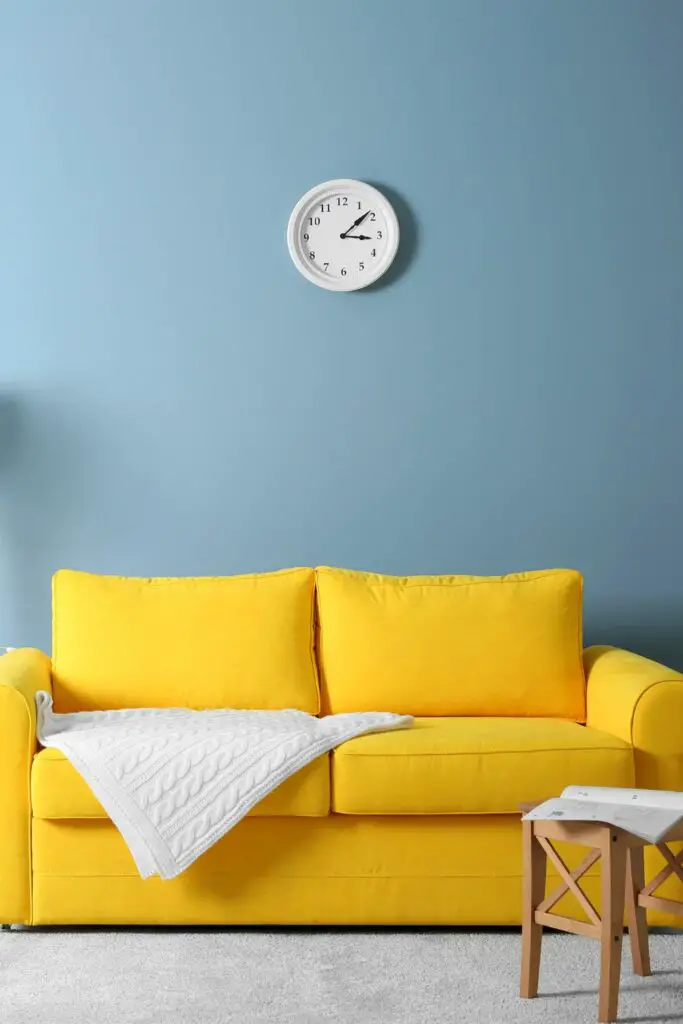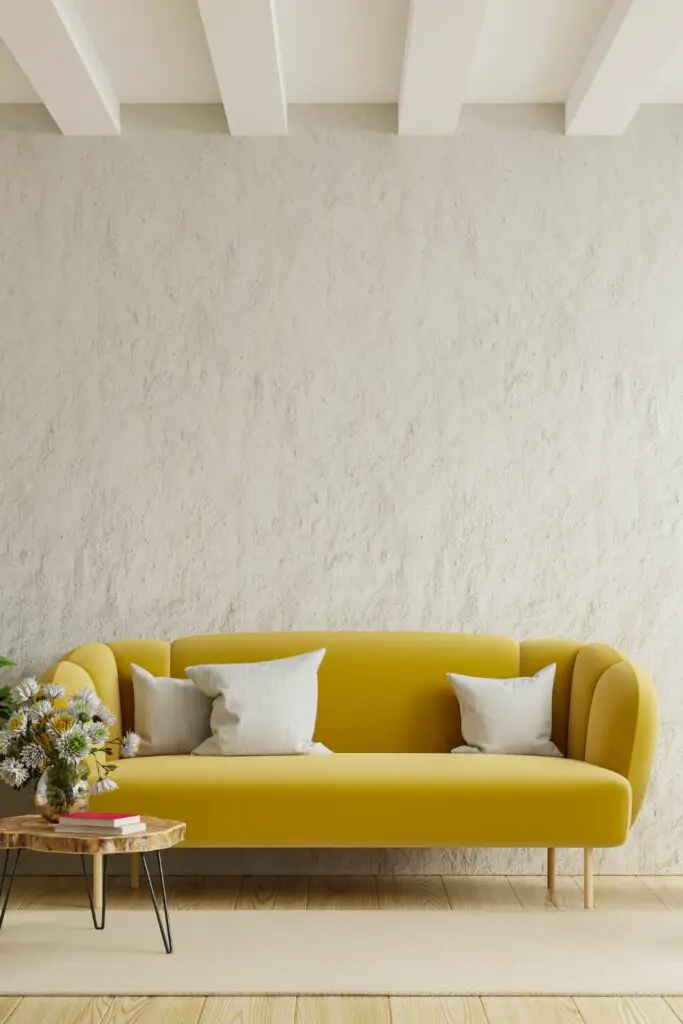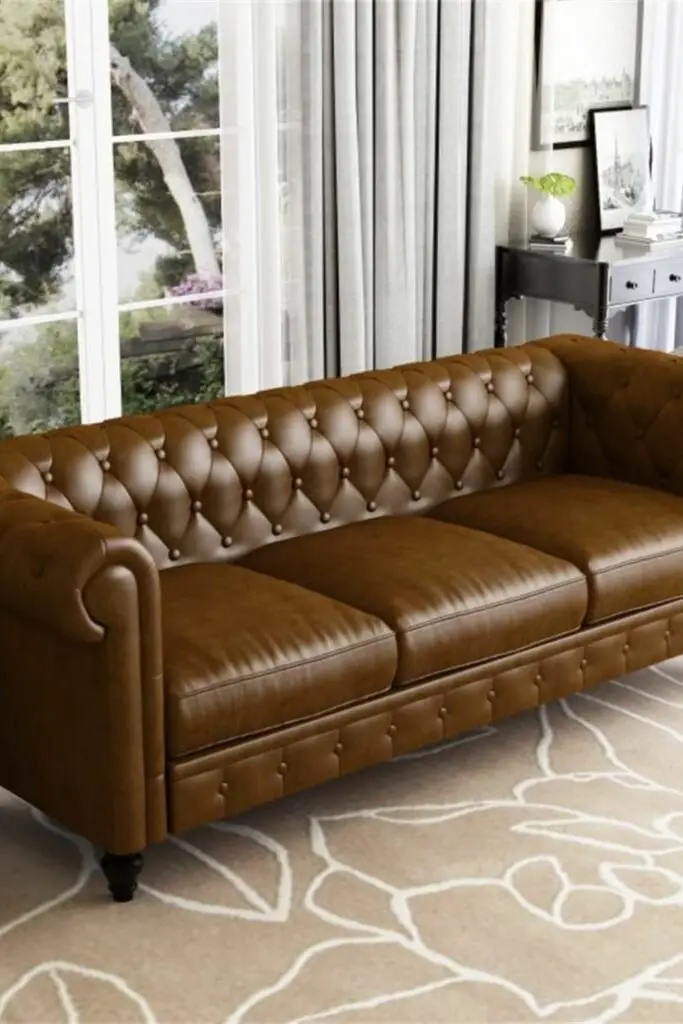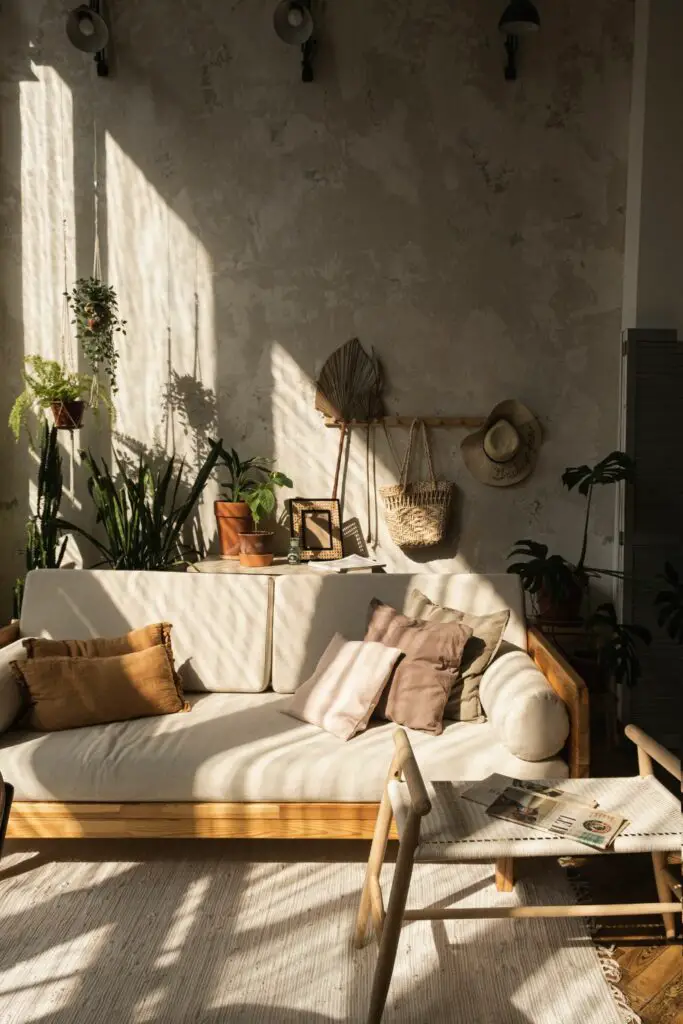Table of Contents Show
Choosing the right sofa for your home isn’t just about comfort—it’s about transforming your space with the perfect blend of style, function, and harmony.
As someone who has journeyed through countless homes, shaping interiors into places brimming with character, I’ve witnessed firsthand how a sofa can either make or break a living space. It’s more than furniture; it’s the heart of your living room’s narrative, setting the tone for countless memories to come.
In today’s diverse market, the sheer volume of options can be overwhelming, yet every style speaks a different language. Whether you’re a homeowner on the brink of redefining your living space or a design enthusiast hungry for inspiration, understanding these languages can be the key to unlocking the full potential of your interior’s aesthetic.
As we navigate through the top 10 sofa styles that are capturing attention in contemporary decor, we’ll explore unique features, compatibility with various interior settings, and tips on making an informed choice.
This journey is not about following trends but about identifying what resonates with your personal style and ensuring your home reflects that uniqueness.
Expect insights grounded in years of experience, observations from different homes, and the subtle art of balancing comfort with aesthetics.
10 Sofa Styles You Can Get Today
From the elegance of traditional sofas to the eclectic vibrance of bohemian couches, here are the top sofa styles to pick from today.
1. Traditional Sofas

Stepping into a room adorned with a traditional sofa, you’re transported to a world of refinement and grandeur. These pieces stand as a testament to timeless craftsmanship, characterized by their classic designs echoing yesteryear’s elegance.
Often accented with intricate wood carvings and upholstered with plush, luxurious fabrics, traditional sofas bring a piece of history into your living room.
Ideal for settings that lean towards a classical or sophisticated aesthetic, these sofas work well in spaces that include other antique elements or rich, decorative accents. They’re at home amidst warm, inviting colors and tend to stand out gracefully in a spacious living room or an elegant office.
Opting for a traditional sofa comes with several perks. These furniture pieces are known for their durability, crafted to serve generations.
Though rooted in history, the evergreen designs transcend passing trends, offering a visual retreat to anyone with an appreciation for artful legacy. They represent an investment in quality and a rich, stylistic heritage that enriches your living space with an aristocratic allure.
2. Contemporary Sofas: The Pursuit of Comfort and Simplicity

In the realm of home décor, contemporary sofas embody the spirit of the modern age by emphasizing comfort and understated design. These pieces are the antithesis of their traditional counterparts, boasting clean lines, minimalist designs, and neutral color schemes that act as a canvas for your living space.
According to a study published in the Journal of Architectural Digest, contemporary interior styles, marked by simple, abstract furniture, contribute to mental tranquility and space fluidity. The research highlights that the minimalist attributes of modern furnishings can subconsciously influence our perception of living spaces, making them feel more spacious and less cluttered.
Contemporary sofas, therefore, are not just furniture pieces but tools that enhance modern living. They complement the dynamic life of today by offering versatility and simplicity.
These sofas fit seamlessly in compact apartments, open-space lofts, or any setting that prioritizes clutter-free, streamlined décor. Their subtle elegance allows other design elements to shine while adapting to various color palettes and accessories.
In essence, choosing a contemporary sofa is an ode to modernity, offering a practical solution for those who seek a blend of immediate comfort and aesthetic flexibility in their fast-paced lives. They stand as a reminder that sometimes, less is indeed more, especially in an era that’s continually seeking the calm in chaos.
3. Modern Sofas: Sleek and Functional

Modern sofas are the quintessence of sleek comfort and functionality, bringing an air of sophistication to any space they inhabit. Characterized by bold angles, refined forms, and often an embrace of geometric patterns, they offer a crisp, no-frills approach to furniture design that resonates with the heart of the 21st century.
The allure of modern sofas doesn’t end with design; it extends into the materials used. High-quality leathers, solid-toned textiles, and metal accents are commonplace, contributing to a tactile experience that is as visually appealing as it is comfortable.
These materials, chosen for their durability and ease of maintenance, also lend themselves to a wide range of textures and finishes, allowing for an additional layer of customization in your living space.
Integrating a modern sofa into your living area requires a harmonious balance within the room.
Here Are Few Tips
- Emphasize space and simplicity by reducing clutter and prioritizing neutral colors with occasional bold accents.
- Pair your sofa with furniture that shares the same minimalist features—think sleek coffee tables and geometric shelving.
- Use lighting to your advantage, highlighting the sofa’s clean lines and creating a focal point in the room.
- Opt for art and decorations that echo the sofa’s modern aesthetic, avoiding overly ornate items that might clash with its simplicity.
4. Transitional Sofas: Blending Classic and Modern

Transitional design is a middle ground between the historical richness of traditional furniture and the sleek simplicity of modern style. Transitional sofas reflect this, boasting lines and forms that are classic yet simplified, devoid of the ornate carvings of traditional pieces but more embellished than their modern counterparts.
Choosing a transitional sofa offers numerous advantages. Their balanced aesthetic has a broad appeal, not conforming strictly to one design paradigm and therefore, inviting a sense of calm, ordered elegance without imposing stylistic constraints.
This versatility means they harmonize with various accessories, color palettes, and other furniture styles, making them an ideal choice for those who appreciate elements of both classic and contemporary design.
To Integrate Transitional Furniture Seamlessly
- Blend textures and materials, such as glass or metal with plush fabrics, for a cohesive look.
- Maintain a neutral color scheme for larger items, introducing color through accent pieces and throw pillows.
- Incorporate a mix of straight lines and rounded profiles in other room elements, mirroring the sofa’s versatile design.
- Use understated patterns that don’t overwhelm the balanced nature of the furniture.
5. Vintage Sofas: Echoes of the Past

Vintage sofas carry with them a nostalgic charm, harking back to eras gone by. These pieces, defined by their antique elements and unique craftsmanship, inject personality and time-honored style into contemporary living spaces.
The appeal lies in their aged look, whether through original period fabric or the characteristic shapes and designs that marked the furniture of the past century.
When hunting for the perfect vintage sofa, it’s important to differentiate between authentic period pieces and modern reproductions. Genuine vintage requires thorough vetting, ensuring the sofa’s condition, authenticity, and, if possible, its history.
Reputable antique dealers, auction houses, and even online marketplaces with verified sellers are good starting points.
Incorporating Vintage Sofas Into a Modern Setting is an Art
- Contrast the old and new by flanking your vintage sofa with modern side tables or lamps, highlighting its charm.
- Upholster the sofa with current fabrics if the original is beyond repair, marrying historical design with contemporary comfort.
- Position your vintage sofa as a focal point, allowing its character to shine without competition from other bold furniture pieces.
Blend eras thoughtfully; use accents like rugs, pillows, and wall art from various periods to bridge the gap between the vintage and contemporary elements harmoniously.
Each of these sofa styles, with their individual histories and design philosophies, cater to different tastes and lifestyles. Whether you’re drawn to the elegance of the past or the comforts of modern living, the perfect sofa awaits to enrich your space with its story.
6. Industrial Sofas: Edgy and Raw

Industrial sofas encapsulate the essence of a bygone era, echoing the stark, utilitarian environments of old factories and warehouses.
This style is marked by its brave use of metals, distressed leathers, and a design approach that finds beauty in the exposed and raw. The minimalistic yet bold aesthetic makes these sofas a statement piece, offering an edgy contrast to more traditional furnishings.
The appeal of industrial style in contemporary spaces lies in its ability to inject character and a sense of history. This design philosophy is about proudly displaying the building materials that many try to conceal, bringing an urban, gritty edge to modern interiors.
To Harmoniously Pair Industrial Sofas With Other Elements
- Complement the metal components of the sofa with other industrial-inspired pieces, like reclaimed wood coffee tables or metal end tables.
- Maintain a color palette that reflects the sofa’s raw nature, such as greys, blacks, and other muted tones, occasionally broken by warmer accent colors.
- Soften the harshness with complementary textiles like area rugs or throw pillows that carry the same color palette but introduce texture and warmth.
- Use lighting with metal accents or exposed bulbs to keep in theme with the industrial style, enhancing the overall ambiance.
7. Rustic Sofas: Homespun Charm

Rustic sofas draw inspiration from nature, designed to bring the outdoors inside. This aesthetic is defined by its use of natural materials, earthy colors, and a rugged, unrefined design that together evokes a sense of warmth and unpretentiousness. These pieces are often robust, with solid wood frames, upholstered with natural fabrics that age gracefully.
The benefits of rustic style are manifold. The use of hearty, natural materials not only contributes to durability but also creates a cozy, inviting atmosphere reminiscent of idyllic rural retreats. This style speaks to a slower, more mindful way of living that resonates in today’s fast-paced world.
To Enhance Your Space With Rustic Elements
- Stick to a warm, earthy color palette that reflects natural elements. Creams, browns, greens, and muted reds work particularly well.
- Pair with accessories that evoke a sense of nostalgia and simplicity, like vintage wooden clocks, pastoral art, or handmade pottery.
- Complement the ruggedness with soft, plush textiles like wool or cotton throws, sheepskin rugs, or linen curtains, creating a multi-textural appeal.
- Incorporate natural elements like houseplants, raw wood, or stones to maintain a connection with nature, integral to this style.
8. Scandinavian Sofas: Minimalism Meets Comfort

Scandinavian sofas exemplify a design tradition that marries functionality with a pared-down, aesthetically pleasing form. Noted for their simplicity, clean lines, and understated elegance, these sofas often boast muted tones, with an emphasis on white, grey, and pastel shades.
The style’s minimalism doesn’t equate to a lack of comfort, but rather promotes it, with plush seating, soft fabrics, and a welcoming appearance.
In Scandinavian design, color, and natural light are paramount. Bright, airy spaces create a serene living environment, reflecting the Nordic appreciation for natural illumination. This design ethos mirrors the region’s approach to life, prioritizing harmony, simplicity, and connection to the natural world.
- Opt for a clutter-free space that focuses on quality over quantity, displaying minimal accessories and emphasizing the sofa’s sleek design.
- Enhance natural lighting with sheer curtains, mirrors, and a color palette of whites and neutrals, perhaps with a splash of classic Nordic blues or greens.
- Combine the sofa with natural elements like wood, wool, or felt, maintaining a cozy yet simplistic aesthetic.
- Choose functional, multi-purpose accessories that contribute to the space without overwhelming it, staying true to Scandinavian practicality.
9. English Rolled Arm Sofa: Classic British Elegance

The English rolled-arm sofa, sometimes simply referred to as the English sofa, is a testament to timeless British design. It’s reminiscent of the cozy, traditional English countryside homes and has been a beloved choice for living rooms across the world.
This classic design is not just about comfort but also exudes a sophisticated charm that’s been adored for centuries. The English rolled-arm sofa is versatile, despite its traditional roots. One of the standout features of the English rolled-arm sofa is its tight back.
Unlike sofas with individual back cushions, this design has a singular, tight upholstered back, offering firmer support. It also means less maintenance as there’s no need to fluff or rearrange separate cushions.
Matching Decor Styles
- Color Coordination: Stick to a consistent color palette. Choose 2-3 primary colors and 1-2 accent colors to ensure harmony.
- Use of Textures: Mix textures (e.g., soft rugs, wooden tables, velvet cushions) to add depth without overwhelming the space.
- Furniture Scaling: Ensure furniture sizes are proportional to the room. Avoid overly large pieces in a compact room, and vice-versa.
- Consistent Theme: Whether modern, rustic, or bohemian, maintain a consistent style theme throughout for cohesion.
- Accessorize Thoughtfully: Choose accessories that not only add aesthetic appeal but also have functional value. Avoid clutter.
10. Bohemian Sofas: Free-Spirited and Eclectic

Bohemian sofas are artistic expressions within the home. They flaunt colorful patterns, a mix of fabrics and textures, and a disregard for conventional design rules.
This style is eclectic, embracing a “more is more” philosophy that, when executed with an eye for composition, can create vibrant, inspiring spaces.
Incorporating a bohemian style requires a delicate balance to avoid overwhelming the space. The key is coordinating color and texture to create a cohesive, rather than chaotic, environment.
To Harmonize With a Bohemian Sofa
- Choose a color scheme that guides your eclectic mix, using the sofa’s most prominent color as a starting point.
- Mix patterns and textures with intention, ensuring they complement rather than compete with each other.
- Introduce vintage or handmade items that add unique character, such as ethnic or tribal rugs, antique lamps, or macramé wall hangings.
- Add greenery like potted plants or hanging terrariums to bring life and an earthy tranquility to the vivacious setting.
These diverse sofa styles cater to different personalities and living philosophies, allowing individuals to express themselves through their interiors. Choosing the right style involves not only aesthetic preference but also a consideration of the atmosphere and life you wish to lead within your home’s walls.













